If you’re looking for simple tips and advice on grilling a thin steak, then you’re in the right place. Sometimes the only option in a grocery store case is a thin steak. Thin steaks often get overcooked, leaving them tough to eat. Learn How To Grill Thin Steaks in minutes using our preferred method.
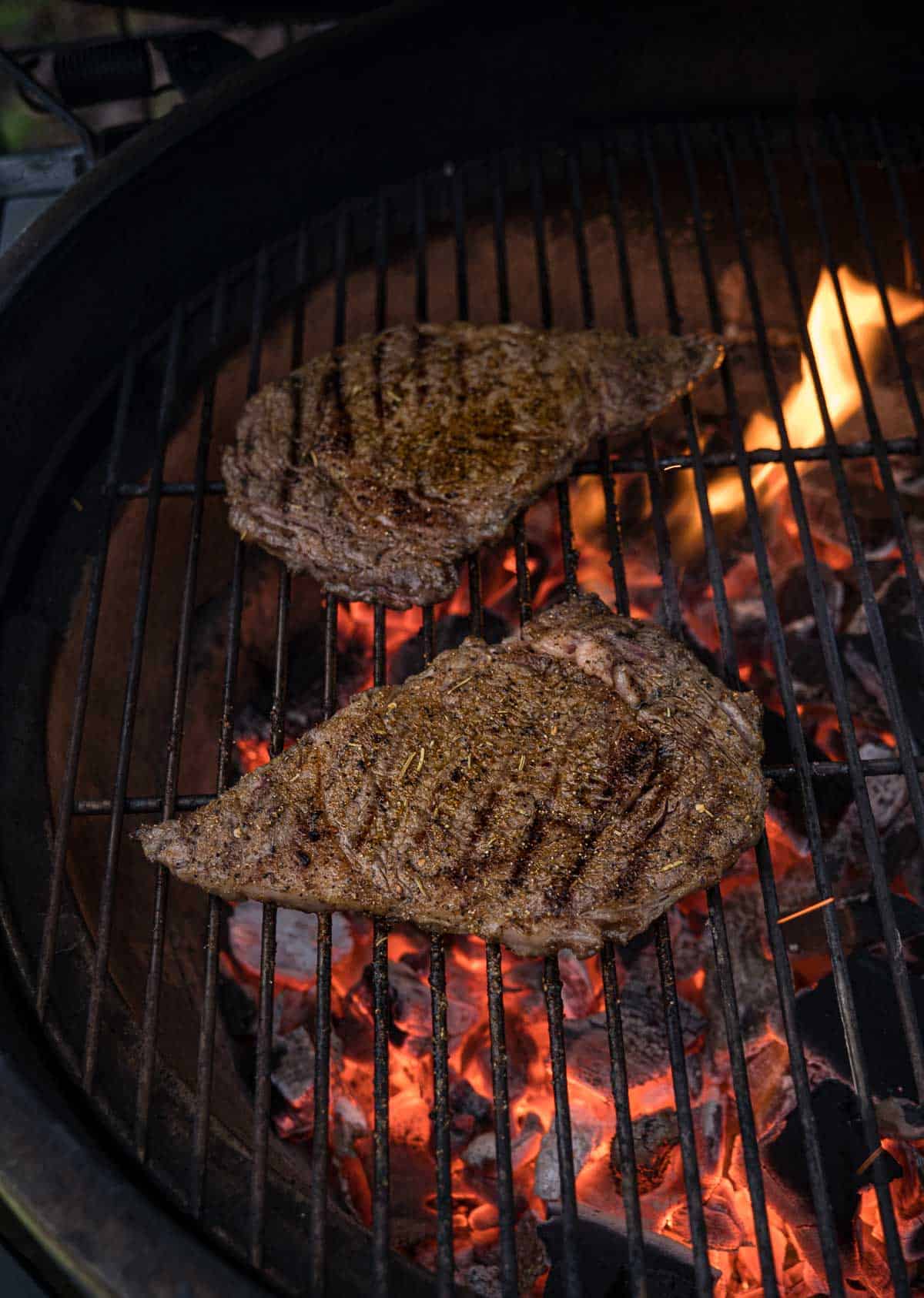
In general, when grilling steak, we always recommend buying thick (around 1.5 inches) steaks. Thick steaks are easier to cook to the perfect temperature. But sometimes you can’t find them and you have to choose from thinner cuts.
The key to grilling thin steaks is to make sure you have a hot grill so you get a good sear and don’t overcook it. Here’s how to achieve that.
Types of Thin Steaks
There are several cuts of meat found in the butcher case of grocery stores that qualify as thin steaks. We define this as steaks cut under 1-inch thick. If all you can find in the grocery store is thin steaks then you can still achieve the perfect steak flavor and texture.
When buying steaks, be sure to look for a good amount of marbling in the muscle fibers for the optimal flavor. This helps with texture and flavor. Explore our article on USDA rating quality for more details.
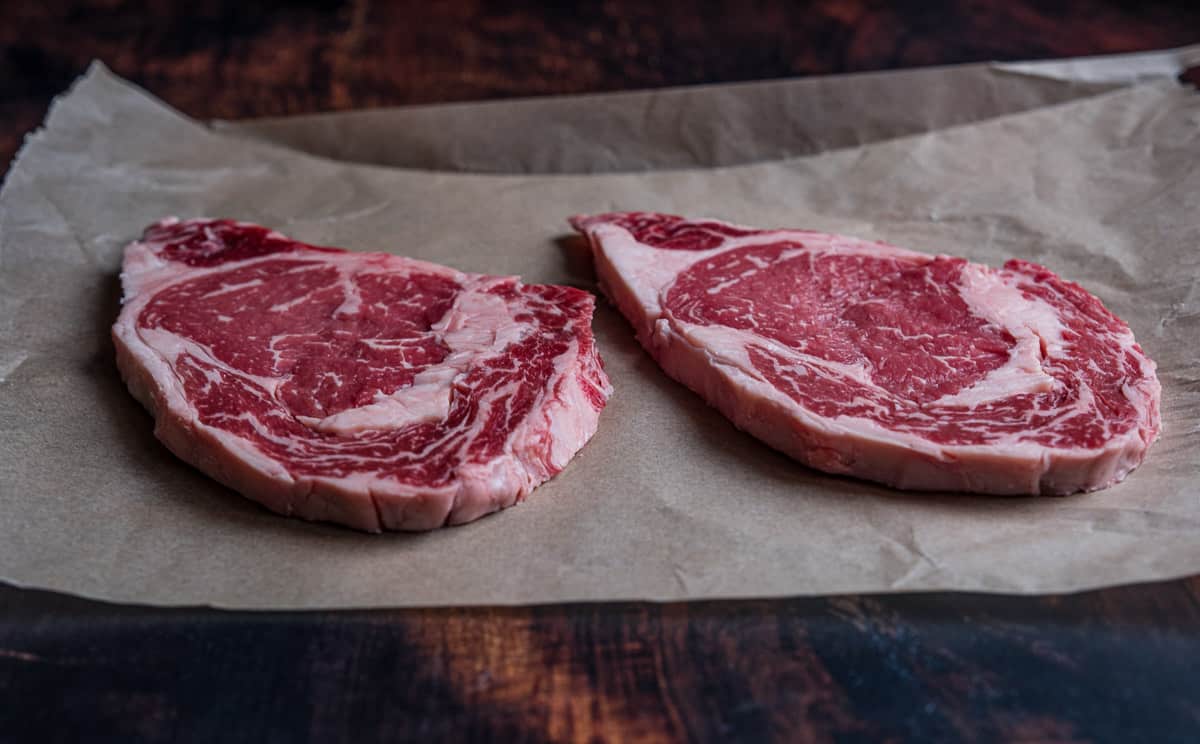
Ingredients
- Steak – We are using ribeye steaks in this example. But this method will apply to any thin steak.
- Olive Oil – This acts as a binder to allow the seasoning to stick. You can use any high heat vegetable oil too.
- Steak Seasoning – We are using our simple SPG seasoning, or Kosher Salt, Coarse Black Pepper, and Granulated Garlic. Alternatively, you can use our savory steak seasoning, beef seasoning for roasts, or our brisket seasoning. There are different seasonings you can choose from. Just be sure it doesn’t contain sugar, which can burn over higher temperatures.
Preparation
- Trim any excess hard fat or silver skin from the meat. This is most common on cuts like flank steak, hanger steak, and skirt steak. Then pat dry with paper towels. This makes the steak dry and clean for the seasoning.
- Apply a light amount of olive oil to the steak and then generously rub steak with the seasoning.
There is absolutely no reason to allow a steak to come to room temperature. This is a cooking myth. Your steak won’t materially warm up this way. You are better off making sure your grill is hot and the steaks seasoned.
How to Grill Thin Steaks
Typically we suggest a reverse sear or a two-zone grilling set to allow thick-cut steaks to cook to the proper internal temperature. But for this example, the best method for grilling thin steaks is to make sure you have a direct grilling setup and aim for high temperatures. You want a hot fire on a charcoal grill or hot propane flame on a gas.
- Prepare your grill for direct grilling and be sure it’s hot. Ideally 500 – 550 degrees Fahrenheit.
- Place your steaks on the grill grates over direct heat. You should hear a sear immediately. Don’t walk away from the steaks. Instead, you will want to flip the steaks frequently (every minute) to keep an even cook on both sides.
- Using an instant-read thermometer, measure the thickest part of the steak and remove it when it hits your desired doneness. We like a medium rare steak, so we pull when the internal temp is 125 degrees Fahrenheit.
- Let the steaks rest on a cutting board, loosely tented in foil, so carryover cooking can occur. With thin steak cuts the carry-over cooking is important. You want to pull your steaks off the grill sooner than your ideal temperature because the internal temperature will still rise 5 degrees.
- Cut into thin slices against the grain of the meat.
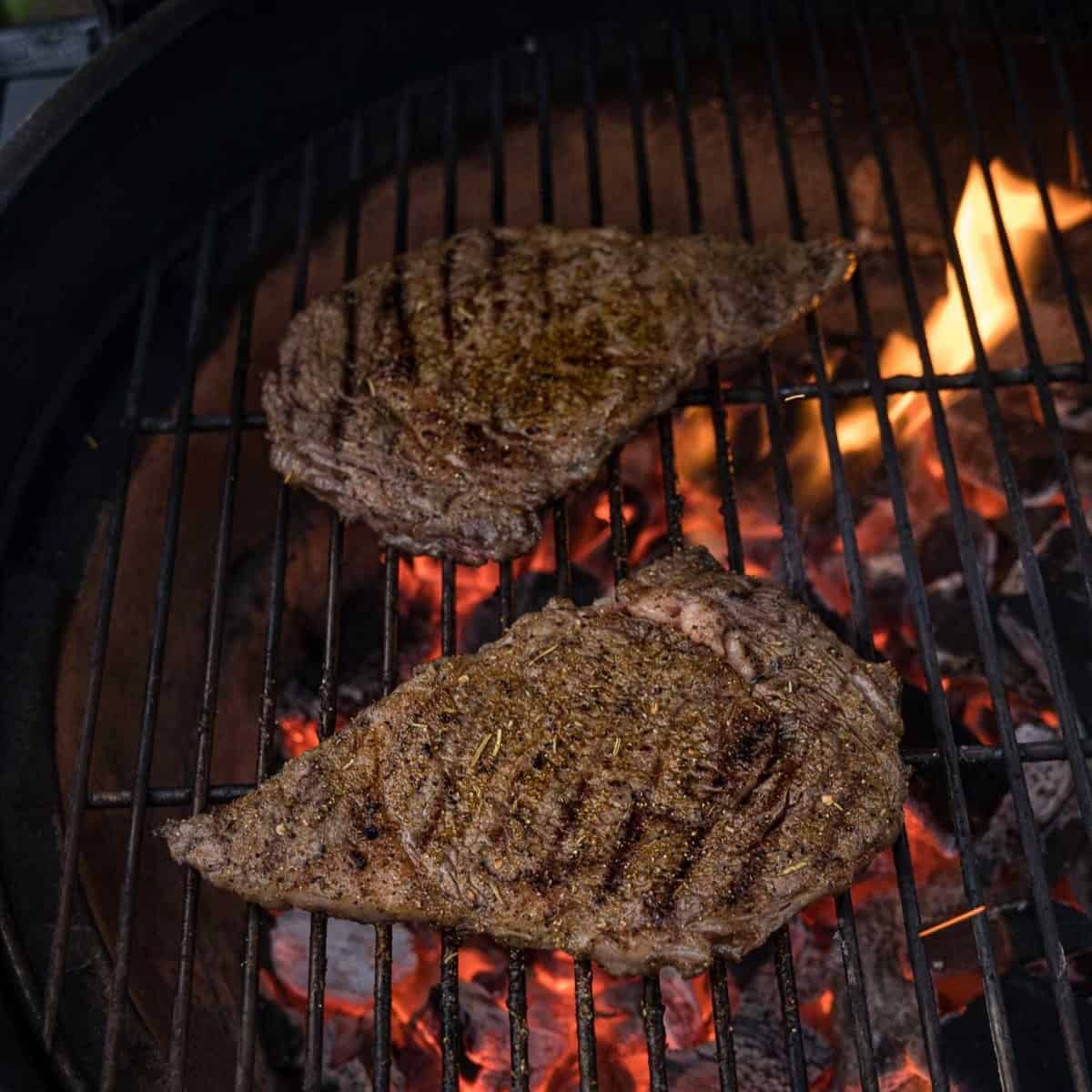
Grill Modifications
Gas Grill – Light two burners to medium-high heat. The temperature gauge of the grill will read 500 – 550 degrees F. Use direct heat as the recipe suggests.
Big Green Egg – Do not use your ConvEGGtor plate. Set up the grill for direct grilling and target 500 – 550 degrees F.
Pellet Grill – Unless your pellet grill can reach 550 – 600 degrees in temperature we do not recommend this method on a pellet grill. You are better off using a gas grill or searing on a hot cast iron pan with some butter or olive oil.
Most pellet grills won’t get hot enough with direct heat to create the browning needed and will overcook the steaks.
Beef Temperature Ranges
Be sure to take into consideration the carry over cooking that happens while steak rests. For steaks remove them 5 degrees lower than your desired temperature. For roasts remove them 10 degrees lower. The steak internal temperature will rise as it rests.
| Black and Blue | 100 – 120° Fahrenheit (F) | 37 – 48° Celsius (C) |
| Rare | 120 – 130° F | 48 – 54° C |
| Medium Rare | 130 – 140° F | 54 – 60° C |
| Medium | 140 – 150° F | 60 – 65° C |
| Medium Well (not recommended) | 150 – 160° F | 65 – 71° C |
| Well Done (not recommended) | 160 – 170° F | 71 – 76° C |
Grill Tip
Don’t walk away from the grill. Instead, you want to flip the steaks frequently (every minute) to get an even cook on both sides. Take the internal temperature after 2 – 3 minutes to make sure you can pull at your desired internal temperature.
Frequently Asked Questions (FAQ)
It only takes a few minutes to grill a thin steak. It’s important to cook over high heat and the steaks will only take a few quick minutes to cook to your desired temperature. Frequently flip the steaks every minute until the internal temperature of your steak reaches your desired internal temperature.
Yes, you want at least a 500 degree Fahrenheit grill or surface. Ideally 550 degrees so you get the right browning, or Maillard reaction, and texture. If the heat is too low, you will not get the browning and as the steak cut cooks it will get tougher as the internal temperature rises.
Grill or pan sear a thin steak at a high temperature. Flip it frequently so both sides of the steak cook evenly.
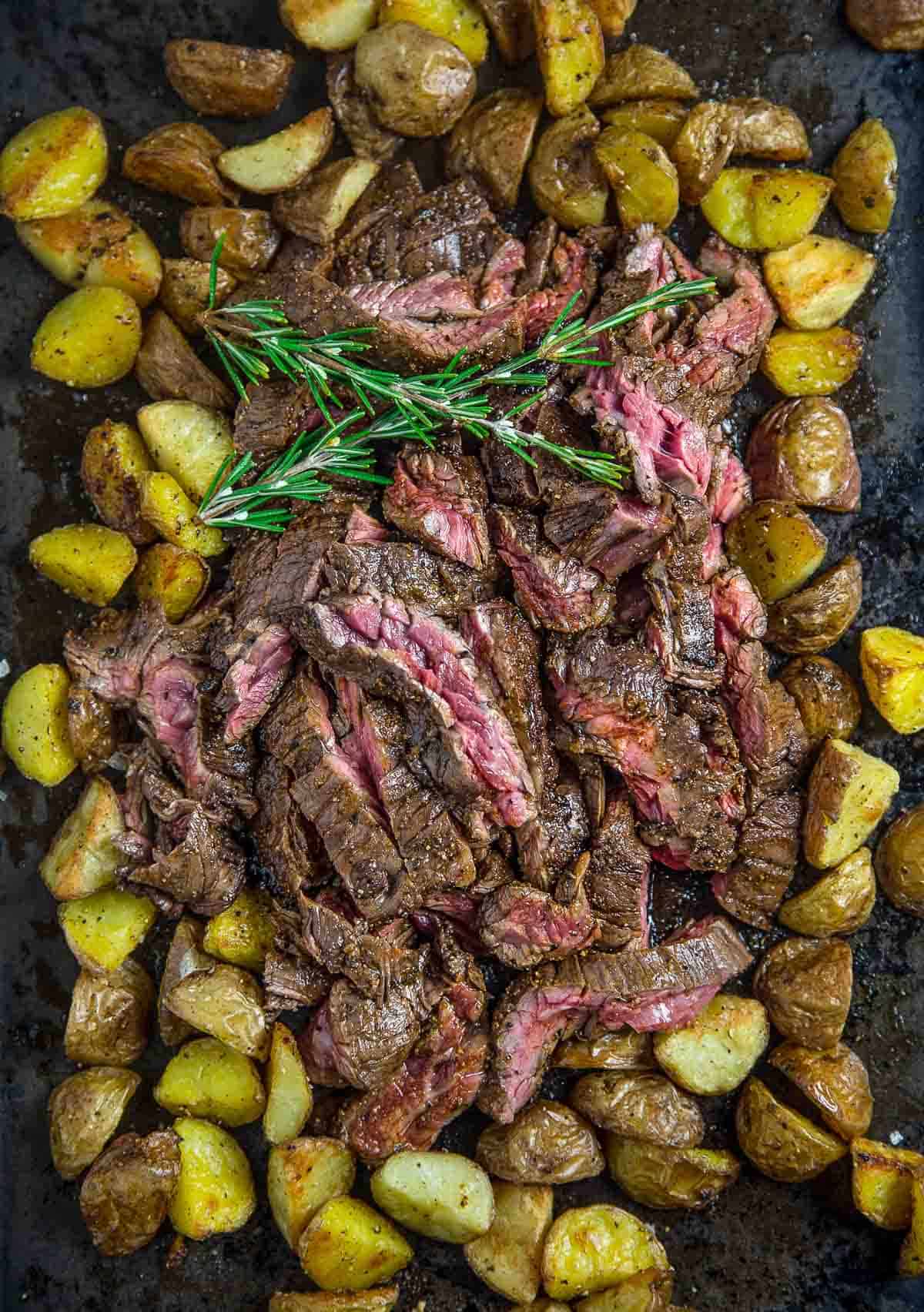
Best Side Dishes
Explore our side dish recipes or choose from some of our favorites.
- Instant Read Meat Thermometer – The most important tool for any grilling and smoking recipe is a good instant read thermometer. Our go to is the Thermoworks Thermapen One. A less expensive version is the Thermoworks Thermopop.
- Long Tongs – It should be in every pitmasters arsenal to protect your arms and pick up anything on the grill.
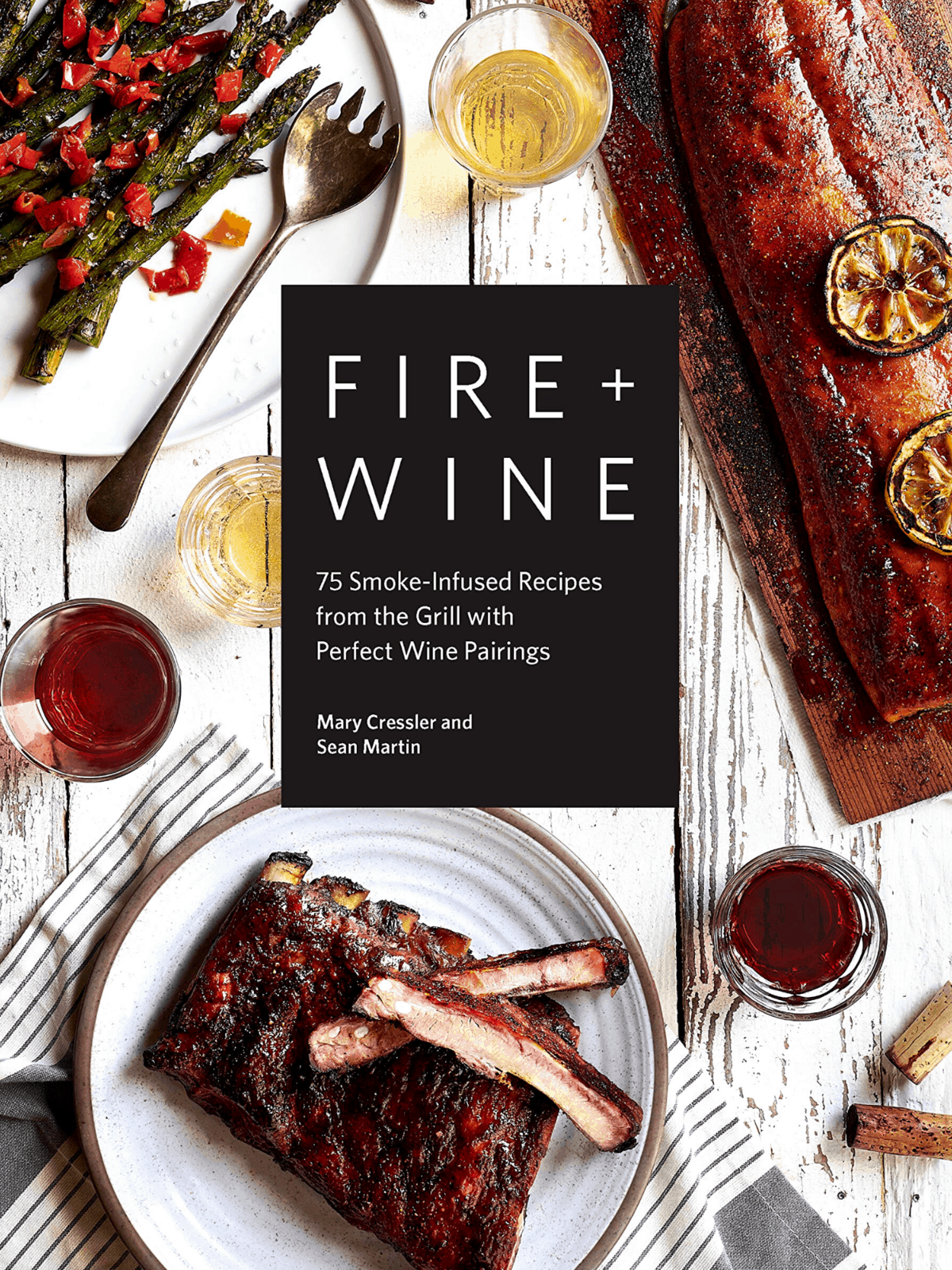
Now on 2nd edition
Fire + Wine Cookbook
“This book is a one-stop guide for anyone truly interested in elevating their BBQ experience into a culinary work of art.”
5 out of 5 Stars
San Francisco Book Review
Mary (a certified sommelier and recipe developer) and Sean (backyard pitmaster) are co-authors of the critically acclaimed cookbook, Fire + Wine, and have been creating content for the IACP nominated website Vindulge since 2009. They live in Oregon on a farm just outside Portland.
-
Prep: Prepare your grill for direct grilling and be sure it’s hot, ideally 500 – 550 degrees Fahrenheit. Coat steaks with olive oil and liberally season them with steak seasoning.
-
Grill Direct: Place your steaks on the grill grates over direct heat. You should hear a sear immediately. Don’t walk away from the steaks. Instead, flip the steaks frequently (every minute) to keep an even cook on both sides.
-
Temp: Using an instant-read thermometer, measure the thickest part of the steak and remove when it hits your desired doneness. We like a medium rare steak so we pull when the internal temp is 125 degrees Fahrenheit.
-
Rest: Let the steaks rest 10 minutes on a cutting board loosely tented in foil so carryover cooking can occur. With thin steak cuts the carry over cooking is important. You want to pull your steaks off the grill sooner because the internal temperature will still rise 5 degrees.
-
Slice and Serve: Cut into thin slices against the grain of the meat.
Calories: 538kcal | Carbohydrates: 1g | Protein: 46g | Fat: 39g | Saturated Fat: 15g | Polyunsaturated Fat: 2g | Monounsaturated Fat: 20g | Cholesterol: 138mg | Sodium: 118mg | Potassium: 619mg | Fiber: 0.2g | Sugar: 0.1g | Vitamin A: 87IU | Vitamin C: 0.2mg | Calcium: 36mg | Iron: 5mg
Nutrition information is automatically calculated, so should only be used as an approximation.